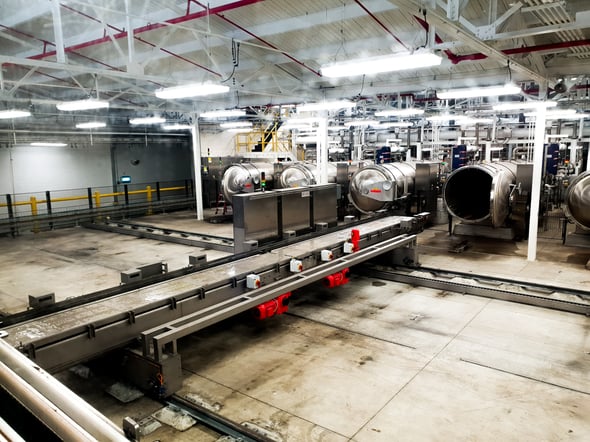The operation of pressure equipment such as autoclaves involves risks that must be minimised. At Surdry, we attach the utmost importance to the safety of our equipment. That is why, in addition to providing them with the most advanced prevention mechanisms, we offer a series of tips in our instruction manual to avoid the most common risks.

- The autoclave explodes during the process.
- The person suffering burns from touching surfaces.
- Trapping with the door.
- Electrical discharges from the cabinet.
- Level falls: the autoclave can release water and wet the plant's surface.
- Although it may seem surprising, a person can become trapped inside.
Follow the operating instructions to work safely
The Surdry autoclaves' user and operating manual gives concrete advice on how to avoid the most common hazards that the operator may face. For instance, regarding the risk of noise associated with hearing problems, it is recommended to wear ear protection when the machine is in operation.
To avoid trapping, another potential hazard, the worker should not wear any suspended objects when working with or near the machine. Wearing jewellery or wearing clothes that are too loose can cause accidents.
The risk of burns is prevented by wearing gloves near hot surfaces when the autoclave is operating. Sometimes, due to the high temperatures and the excessively humid environment of the facilities, workers may suffer from the heat. Therefore, it is recommended that the autoclave has a complete insulation system throughout the vessel to prevent the risk of contact burns from happening.
Finally, there is the risk of falling, as the autoclave is usually located damp and there is water on the floor. Hence the need to wear non-slip footwear and pay special attention to wet areas. However, Surdry autoclaves are designed to prevent water from overflowing at the end of the process thanks to the configuration of its control system that will prevent the door from opening, ensuring safety at the end of the process.
How does Surdry reduce the risks operating autoclaves?
Apart from the fact that workers must take the appropriate protective measures, Surdry's autoclaves integrate a series of control mechanisms that minimise the risks of any human failure:- Control of the autoclave pressure by means of pressure valves.
- Installation of an overpressure safety valve.
- Water outlet valve to prevent the water level from rising too high and filling the floor with water when the door is opened.
- Ensuring that the welds on the vessel have been made in accordance with the regulations governing pressure equipment.
- Implementing an opening safety system that prevents it from being opened if the process has not been completed.
- Installing a lock on the electric cabinet door.
Surdry assists and trains the customer in the safe operation of the autoclave.
Not everyone is allowed to work with an autoclave. Only qualified or suitably trained personnel are permitted to operate the autoclave. These workers must have sufficient training and experience to be able to identify the risks, analyse them and avoid those arising from electricity, machinery, as well as other energy sources and power supply systems of the autoclaves.
Beyond the correct functioning of our machinery - technology leaders - and that the customer feels satisfied and supported at every time, one of Surdry's main priorities is to achieve the safest possible working environment. That's why, in addition to providing the necessary documentation and manuals, we train the people who operate the equipment.
Our priority is to provide high-quality equipment that guarantees the highest levels of safety in your sterilization processes.


